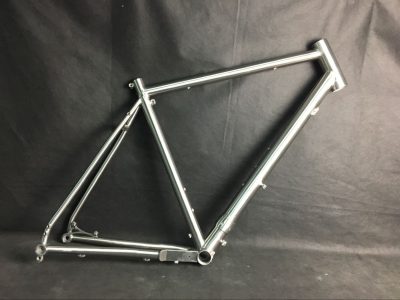Here in Colorado, we have some fantastic custom titanium framebuilders. Moots, Mosaic, Dean, Merlin, Alchemy, Bingham Built (Eriksen), and several I’ve missed. For a while, back in the early years of the millennium, I was designing custom titanium frames and contracting out the welding. Later, I also designed a bunch of frames for Twenty2 Cycles, which sadly has shuffled off this mortal coil. All told, I have designed about 40 frames, mostly road and ‘cross, and a few fatbikes.
In late winter of 2017, I was cleaning my titanium bike. It was the first bike I had designed for myself, and I loved riding it. I had based the design off a Bianchi cyclocross bike I owned and liked, but I wanted a taller head tube, disc brakes, and more tire clearance. It was 2003, and most of my friends told me that disc brakes on a bike was stupid and not worth it. My previous experience with road brakes (particularly single-pivot) was that they were generally decorative in nature, and relied on air resistance to slow you down. As I am not built like the tiny climbers who make steep grades look flat, I prefer a braking system that you know, stops you.
As it stands now, I think this whole disc brake for road bikes thing might catch on.
My bike had been a bit noisy, so I put it in the workstand and started cleaning it. Sadly, I discovered a crack, almost halfway around the seat tube, just next to the front derailleur. Although I was really bummed that the bike was done, it gave me a chance to fix the things I had missed in the design, as well as update a few things.
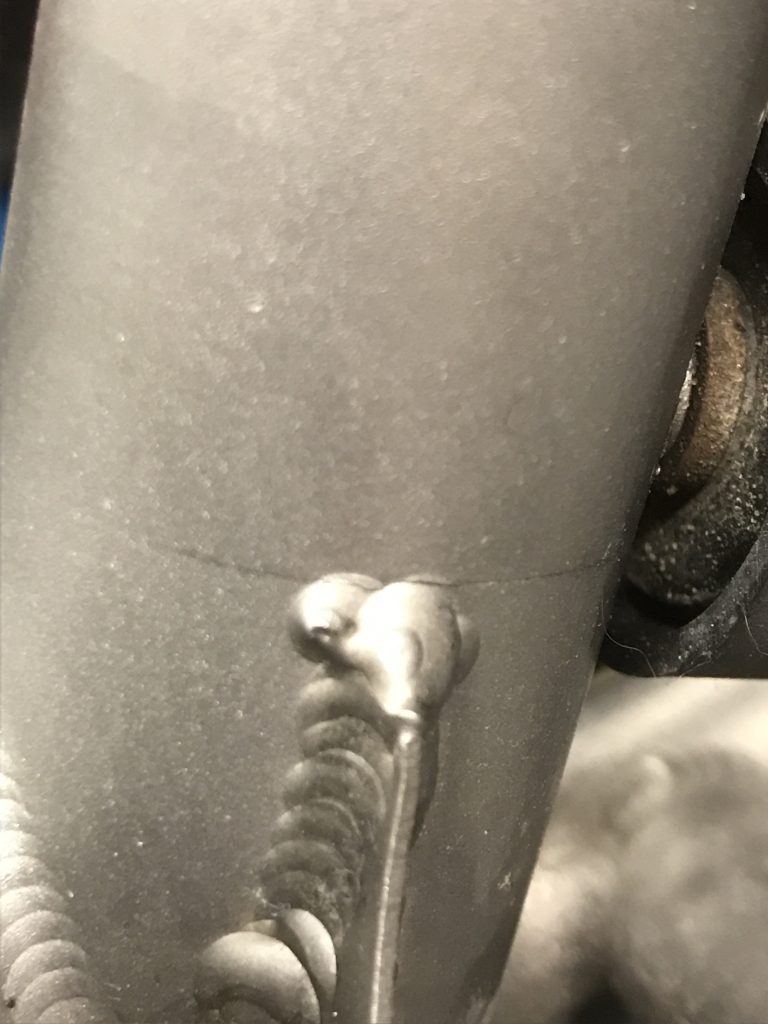
I dove headlong into researching framebuilders, and I looked at options from every builder in the state. I then looked at my bank account, and realized that never the twain shall meet.
I searched eBay for frames, and although at any given time there are a couple hundred titanium frames listed, none were right. I wanted disc brakes, thru-axles, a 565mm effective toptube, 27.2 seatpost, tall headtube, and huge tire clearance.
In my digging, I stumbled across Waltly Titanium, a framebuilder in Xiamen, China. I struggled with the idea of a Chinese product, as I used my iPad and HP laptop in my searches, rode my non-broken bike with carbon fiber forks, chatted with friends on my iPhone, put my action camera into its injection-molded off-brand case, watched shows on my TV, recorded my cycling on my GPS, ordered my custom cycling kit (with 2-week delivery), wore my trucker hat, and screwed in new LED lightbulbs.
Yup, nothing in my daily life was ever manufactured in China.
So, I browsed their site, found a design similar to my old frame, and emailed them. They replied quickly, and the price was too good to pass up. I sent a deposit via PayPal, and within a couple of days had a drawing to review. We traded emails and comments until the drawing matched the geometry and details I wanted, then a few weeks later, the bike showed up.
The teaser photos of my build didn’t do it justice. The metal gleamed, the welds were tiny stacks of dimes with no visible starts and stops, the bottom bracket and head tube were nicely faced. In short, well beyond my expectations. I couldn’t wait to build it it up, but first, I had to get busy with some graphics.
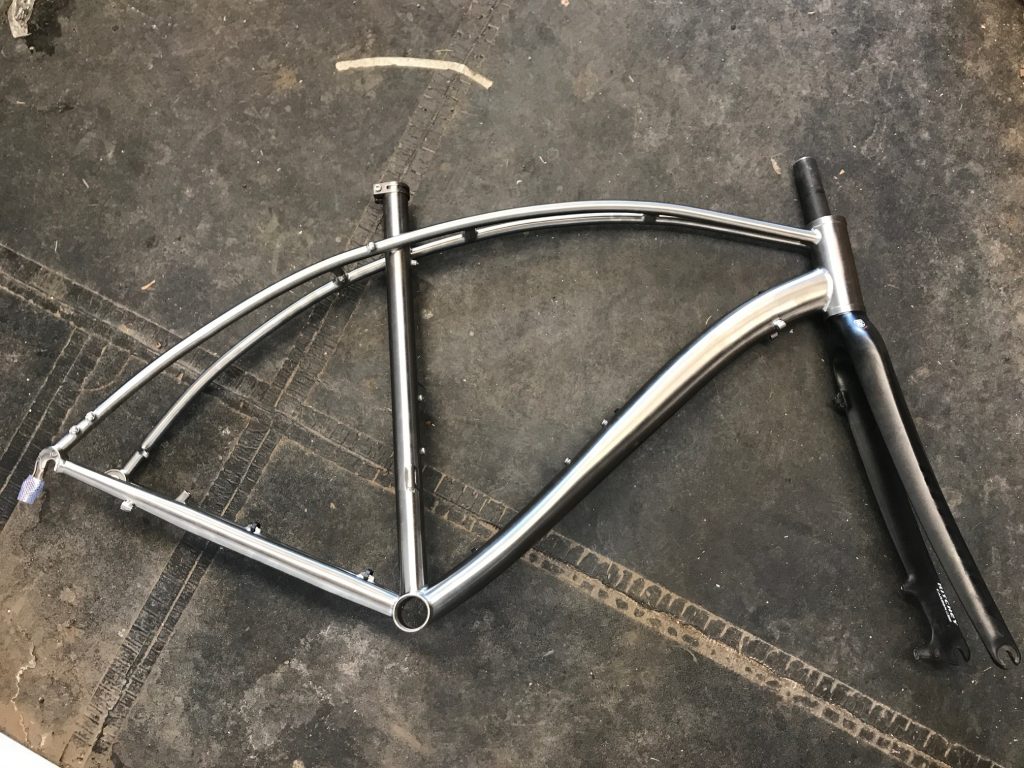
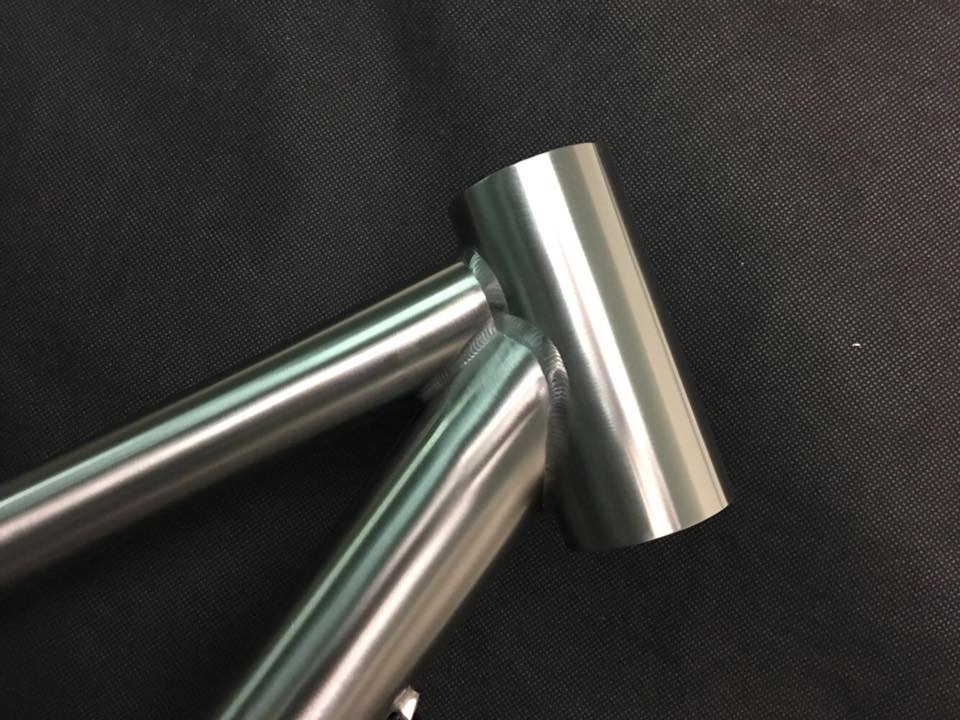
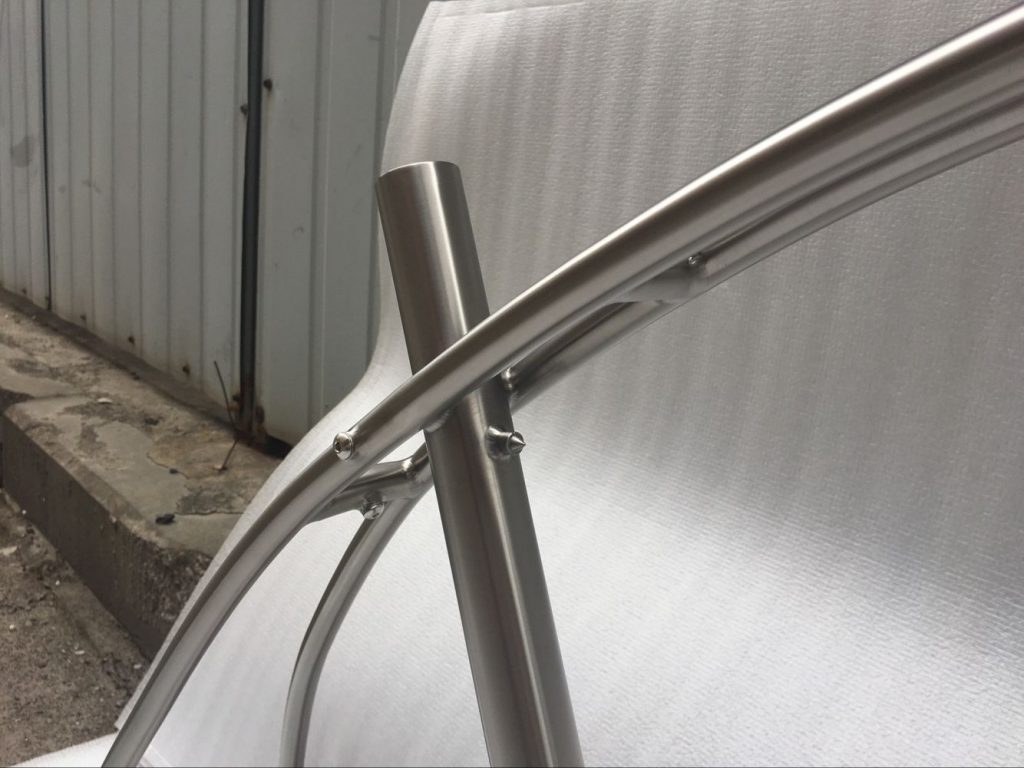
I had on hand an anodizer, plus my well-loved antique vinyl sign cutter, so it was time to make some graphics. As always, it’s hard to stare at a blank canvas, but after some time, I decided on molecules as my graphic design. Titanium is easy to anodize, and unlike aluminum, the process is non-toxic. I put a teaspoon of TSP into a bowl of distilled water, connected a foam brush to the anodizer, put on rubber gloves, and went to town on it. At first, I simply splashed the color on, then put the vinyl masks on top, then borrowed a sandblast cabinet from a friend and blasted the color off. Later, I refined my process.
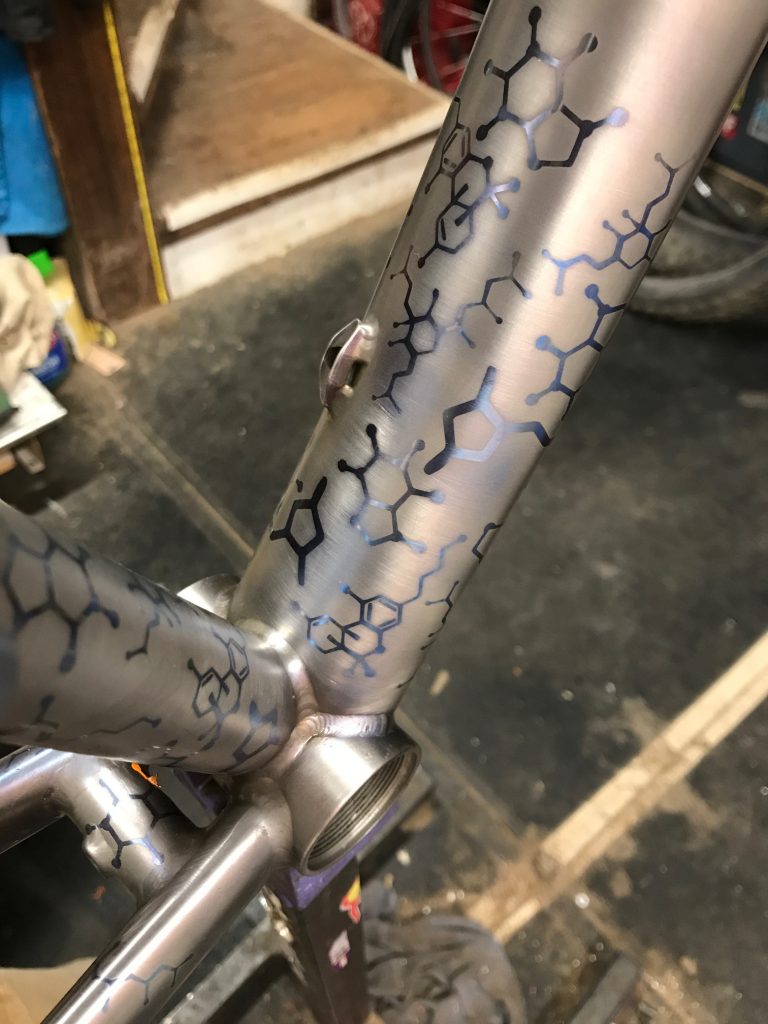
Once the frame was complete and all the parts installed, it was time to ride. I put on a trusty pair of 700c wheels I had built (with hubs converted to thru-axle), and down the road I went. The bike was stable, stiff at the bottom bracket, and straight as an arrow. A bike that is not dead straight won’t track well with hands off the bars, but this one could go forever. I had designed relatively short trail to match the quick-steering feel of my ’98 Ibis Spanky (still the best road bike I’ve ever been on), and I was pleased with how agile and precise the steering was.

On a whim, I bought a used pair of 650b (27.5″) wheels. They came with Compass Babyshoe Pass tires (non-tubeless). The 42mm wide tires, at low pressure, rode smooth as silk and didn’t feel any slower than traditional 700c. One of the tires delaminated, so I replaced them with Pacenti Pari-Moto tubeless. These tires, like the Compass, as well as the Gravel Kings, are all made by Panaracer. They all have a double-file tread, are relatively light, and very supple. Although they all have different descriptions, I can’t tell them apart, either on the bike or in hand. They roll beautifully, and other than the damaged Babyshoe, wear well.
I took the bike on a family vacation to Mallorca (see the travel posts for descriptions of riding there), and the bike seemed in its element on narrow, steep, twisty roads. Much of the road surfaces on the island are in good shape, but on the rough sections, the 650b tubeless tires at about 45PSI erased the bumps and rough surfaces. The bike design was a resounding success, and Waltly’s quality was top-notch.
The bike was so good, in fact, that I wanted to cut it in half.
Traveling with bikes is awesome, but traveling with bikes in smaller suitcases is awesomer. Even though I had designed some small travel bags for non-breakwaway bikes, these three bags are just large enough that they fill a rental car. Still, they are considerably smaller than hardshell cases. Plus, even though the cases I designed are pretty small, they are slightly over the maximum bag size, and there’s always the discussion with the gate agent about how nope, nope, definitely not bicycles in these big old bags.
I got back in contact with Waltly, having sold the frame and fork while sitting the bar at my favorite brewery, and checked on pricing. The breakaway frame was about $200 more than the non-breakaway, but that’s one baggage fee-laden trip, so clearly not too big a deal. I sent the deposit, along with the geometry I wanted for my frame as well as one for my wife. I have noticed that N+1 is considerably easier when some of the Ns are for her.
After more back-and-forth on designs and drawings, plus photos of things I wanted, the frames and forks were on their way. Shipping time, even in December, was about 10 days, so not too bad. Once the frames arrived, again, careful inspection showed high-quality welds and good finish, and as these were breakaway frames, you could look inside the tubes and see that the weld penetration was excellent.
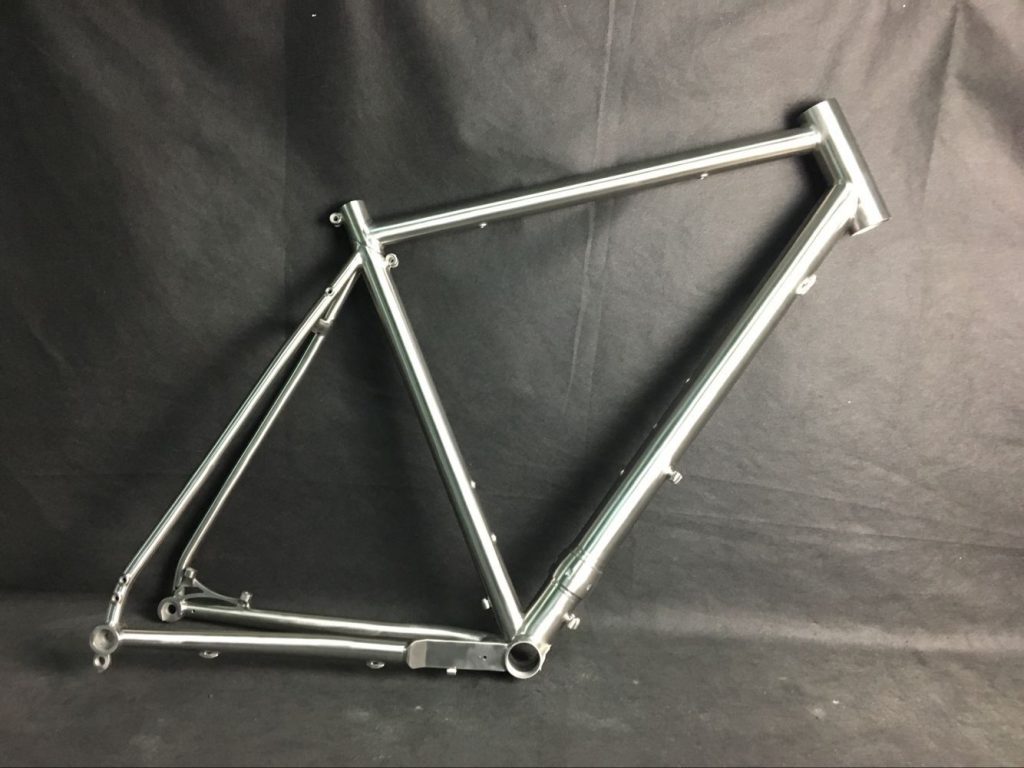
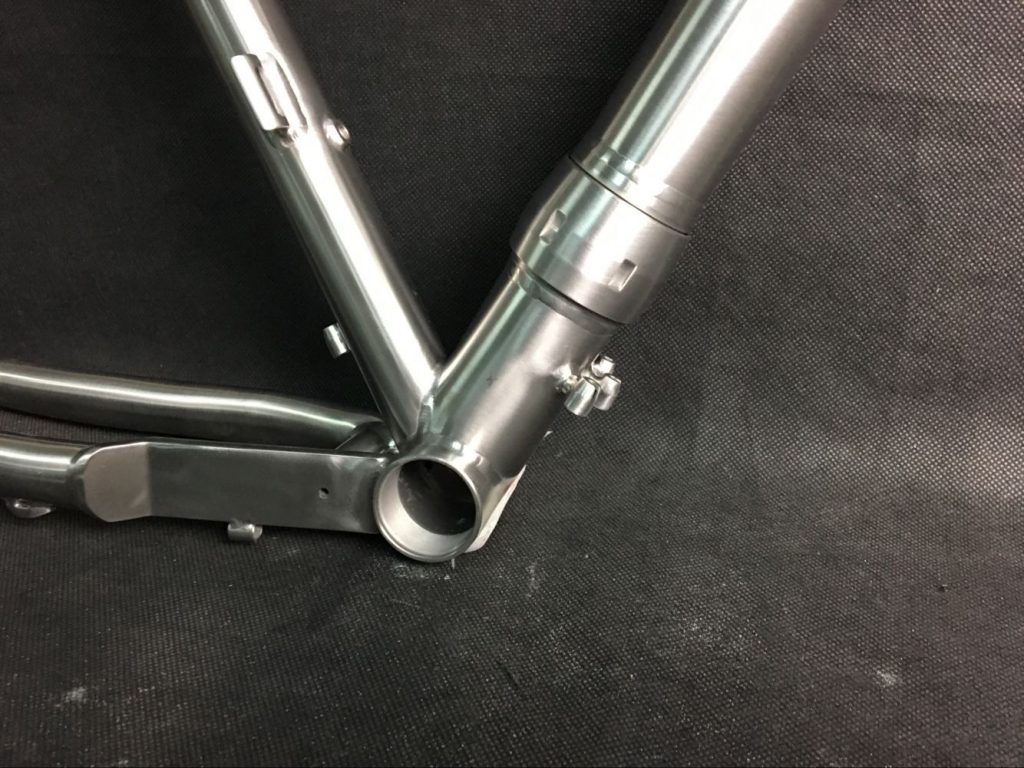
Ride quality on the bike is excellent, and Waltly’s suggestion to use 44mm downtubes (presented as an aesthetic choice to me) was spot-on. The lower half of the bike is stiff and stable, which invites out-of-the-saddle climbing and a steady, planted feel in fast descending turns. On my wife’s bike, I specified 12mm seatstays, and on mine, 16mm. This softens the back of the bike slightly, and paired with a 27.2mm layback titanium seatpost, the ride is very smooth.
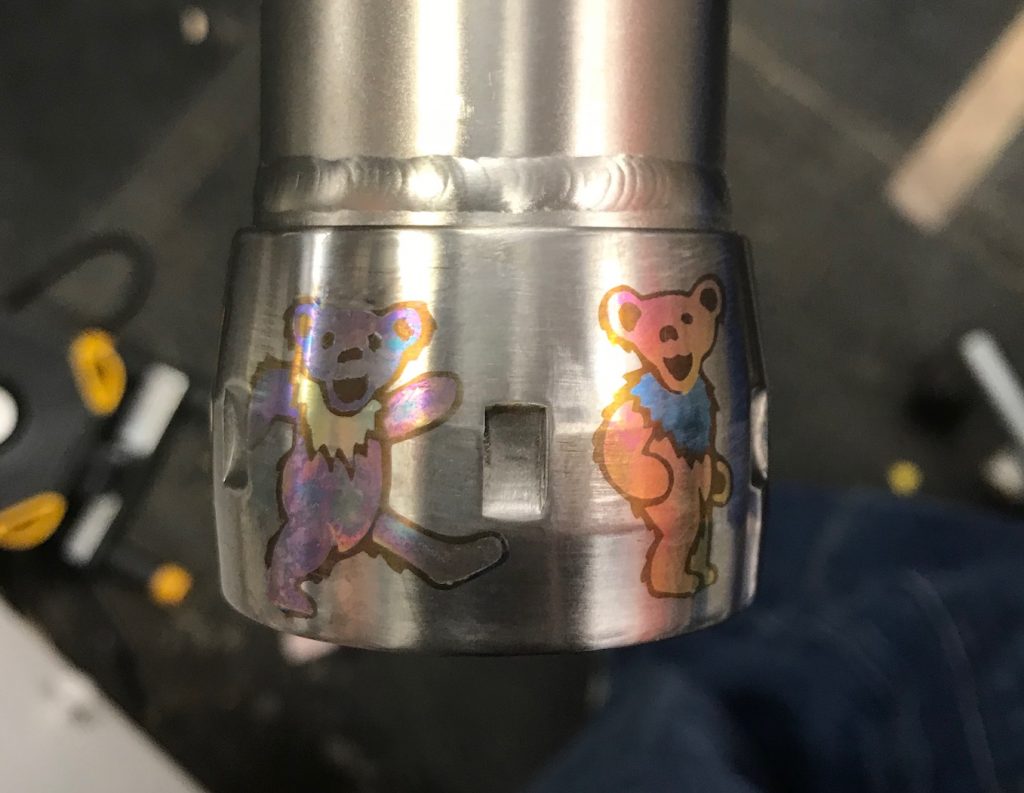
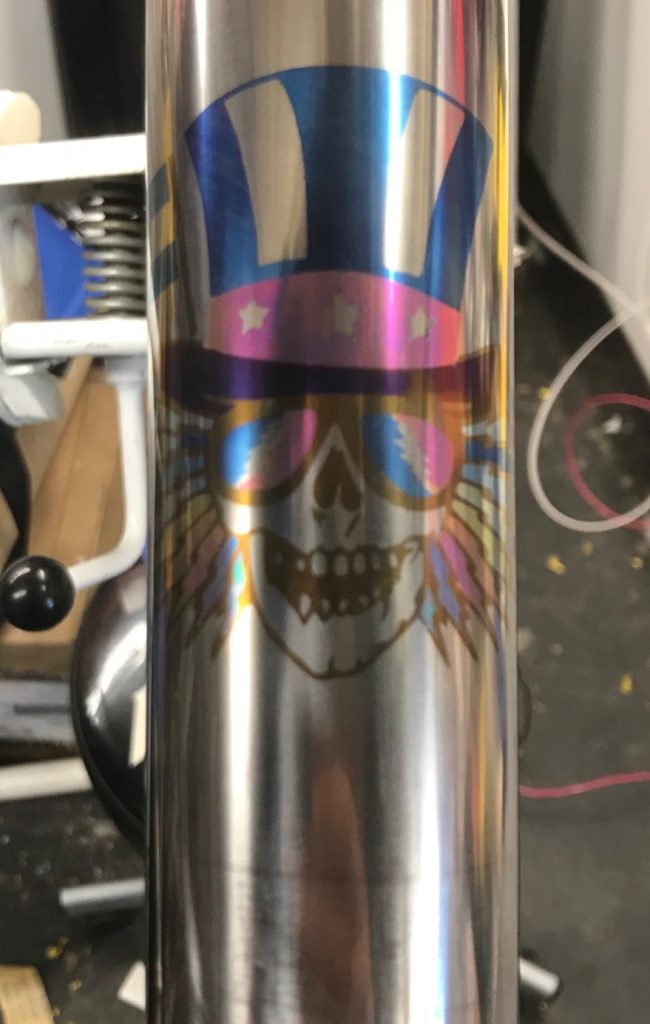
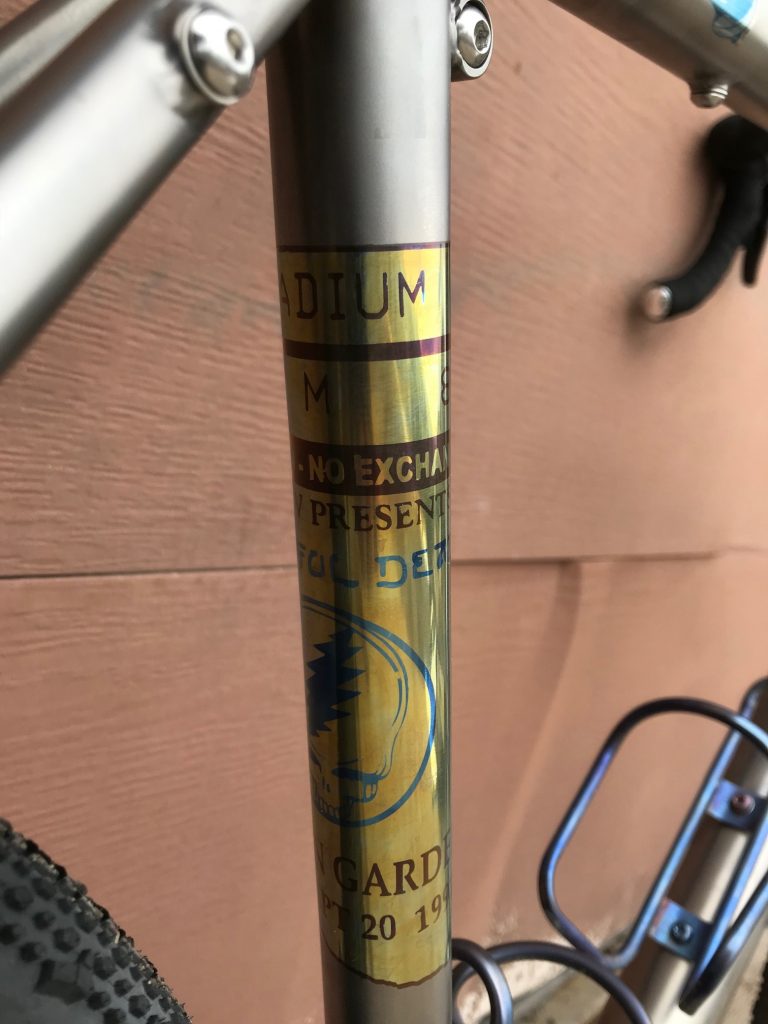
Now that you’ve made it this far, you’re wondering when the hell I would talk about the price. You’ve been relatively patient, so I’ll tell you what Waltly charged me for each frame. Your mileage may vary, based on tariffs, the mood of the sales contact, and so forth, and these were bid in 2017. The fixed frame (curvy one in the upper photos) was $750.00 plus $150 shipping. There was no upcharge for fender and rack mounts, nor for the design changes I made to their generic geometry.
The breakaway frames were $960, plus $150 shipping for two frames (one box). Again, no upcharge for the plate chainstay, fender and rack mounts, or the design adjustments. They even suggested increasing the downtube to 44mm and didn’t add cost.
Communication is by email and .pdf drawings, and for the most part, it goes smoothly, but, caveat emptor, you better know exactly what you want and mark it well. I wanted the rear disc hose guides on the inboard side of the chainstay, and marked my wife’s drawing. Perfect, no problem. I didn’t mark my drawing, and the cable guide is outboard, where my heel hits the hose. Describing that in an email didn’t work.
Similarly, I had a hell of a time getting them to move the cage bosses down the seat tube. I think that took more emails than anything else, but in the end, they got it.
So, cost and communications aside, what really matters is ride quality. I’m pretty good with geometry, and I’ve ridden enough bikes to know what I like, and more importantly, what I don’t like. I’m a fan of quick steering bike that like to lean over, so that leads to short trail and long front centers. My Ibis Spanky steers with the slightest pressure of the heel of my hand, and it’s titanium cousin is very similar. Due to larger tire outside diameter (in both 650×42 and 700×38 modes, the titanium bike has longer trail, but it’s equally as fast and stable on descents. I’m comfortable taking one hand off the bars to grab a bottle at 40mph. The Spanky carves around turns like a razor-sharp slalom ski, but the titanium bike leans over more due to the larger contact patches. Judging by Strava, there’s no real speed difference between the bikes or wheelsets.
Ride quality is different in feel, with the Spanky feeling nearly frictionless but reporting back the road texture. The Waltly bike is noticeably stiffer across the bottom bracket, as the larger tubes would dictate, and it nearly demands that you climb out of the saddle. The Spanky prefers that you stay seated. That being said, there is no discernible flex in either, and the low-pressure tires on the titanium frameset probably mimic the flex in 20-year-old butted steel. The coupler in the titanium downtube also shortens the tube, stiffening it.
The only difference in the two designs is 5mm longer chainstays to adjust chain line for the disc brake (142mm rear spacing vs 130mm).
The upshot is that despite geometric similarities, they have different ride qualities, and both work well.
Here’s where I admit that I actually had TWO breakaway frames made for me. My wife doesn’t know, because I make sure the two frames are not in the basement at the same time. Think Clark Kent and Superman.
My second, non-existent frame (my wife doesn’t read this, but still) is based on my ‘98 Ibis Hakkalugi. That is, if I had a second bike, it would be. It’s not. There’s no titanium breakaway gravel bike in the basement, move along.
Interestingly, Ibis has discontinued their carbon Hakkalugis in favor of the new Hakka MX. This new design is essentially identical to the 1998 model, save a taller head tube. The old catalog didnt call the Hakkalugi a “cross bike”, but instead nearly defined today’s adventure and gravelbikes to a T.
I looked at the MX geometry, and decided I didn’t like the toptube length. My titanium version (if I had one) has a 56.5cm top tube, but other than that, identical geometry to the MX.
This bike (if it existed) is stable and disturbingly fast on singletrack. If I had it, my Strava would show that it’s faster than my mountain bike on the local after-work trail network. It carves around corners, feels planted and rock solid, and invites pushing speed.
if the “real” Hakka MX is half as good as my version, it’s a hell of a bike. But mine carries more beer, since it has 4 cages. Or it would, if it existed. Love you, honey. Please don’t go downstairs.
